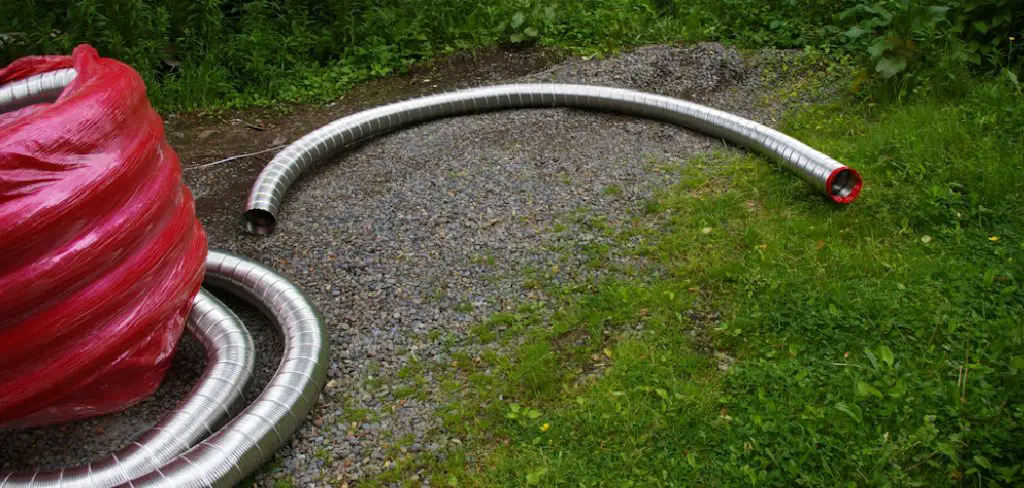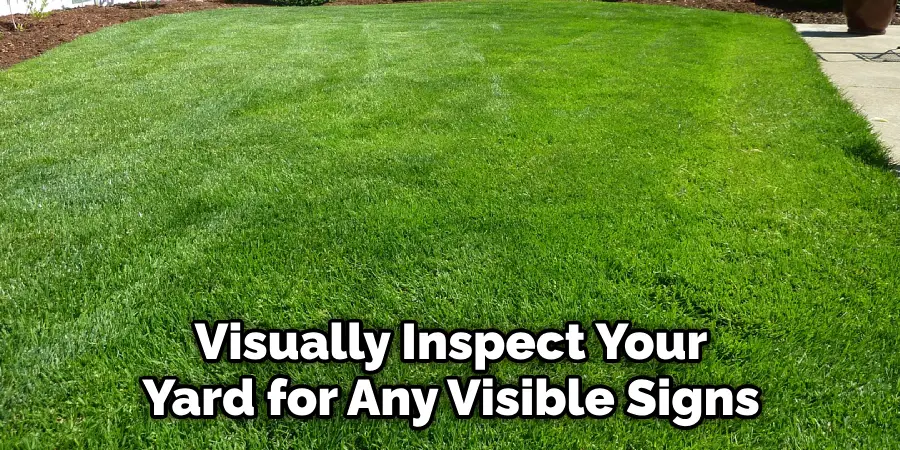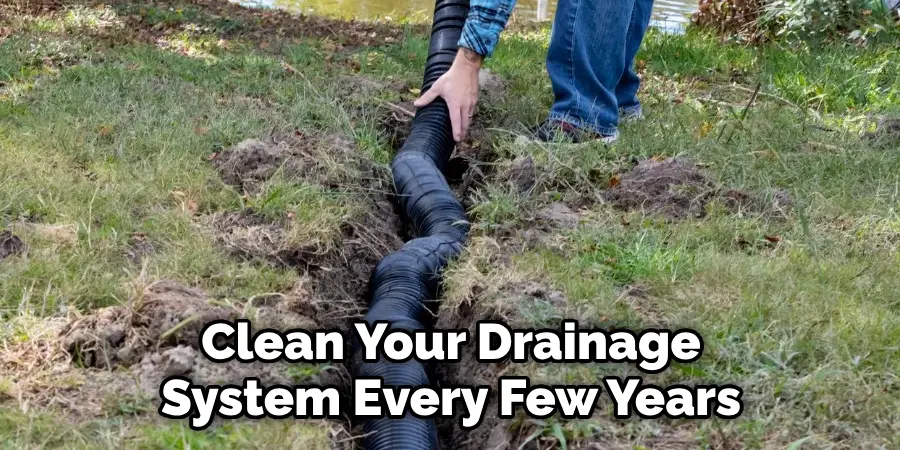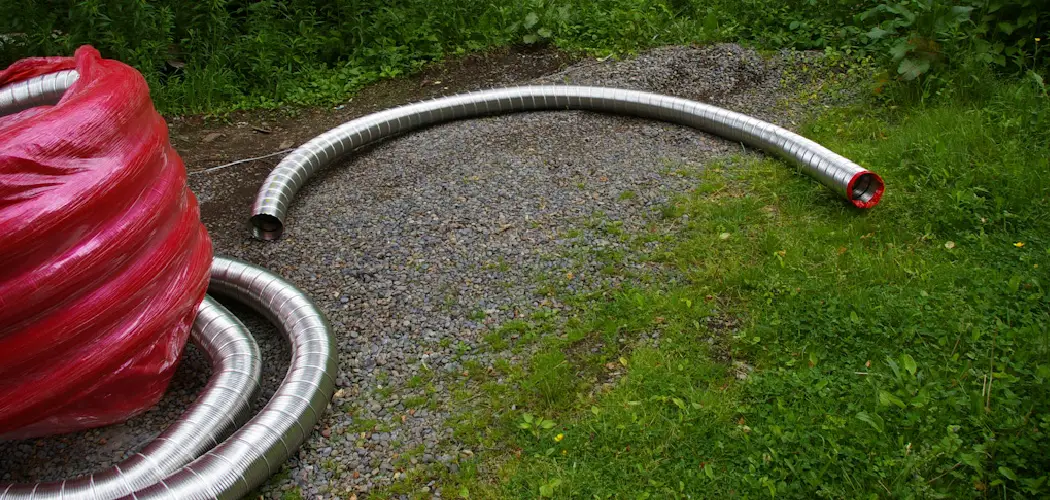Locating drain pipes in your yard can be a puzzling task, yet one of great importance. These subterranean elements are key to the health and integrity of your property, rerouting excess water to prevent issues like soil erosion, waterlogging, or foundation damage. Despite their vital role, the hidden nature of these pipes can make them tricky to find when needed for regular maintenance, modifications, or repairs. Recognizing the complexity of this, we’ve developed a guide on “how to find drain pipe in the yard.” Based on comprehensive research, this guide outlines practical and effective strategies for identifying the position of drain pipes in your yard.

Can You Find a Drain Pipe in The Yard? Why It Matters?
Before we dive into the process, let’s understand why it is essential to locate drain pipes in your yard. Besides preventing costly repairs and preserving the structural integrity of your property, finding drain pipes can also help improve their efficiency. By identifying the pipe’s exact location, you can better understand its layout and potential blockages or damage, allowing you to take corrective measures or implement preventive maintenance.
Understanding the Drainage Systems
Types of Drainage Systems
To effectively locate a drain pipe, it is essential to understand the different types of drainage systems commonly found in yards. The most common ones include surface or open drainage systems, subsurface or underground drainage systems, and French drains.
Surface or open drainage systems are visible and usually consist of gutters, downspouts, and channels that direct water away from the property’s foundation. Subsurface or underground drainage systems refer to pipes installed beneath the ground, which collect and redirect excess water. French drains are a type of subsurface drainage system designed to alleviate excess groundwater from low-lying areas.
Common Locations for Drain Pipes in Yards
Now that we have an overview of the different types of drainage systems, let’s explore where you can typically find drain pipes in your yard. The most common locations include along the house’s perimeter, near downspouts, and in low-lying areas or areas with poor drainage.
When it comes to materials used for drain pipes, there are various options available, including PVC, concrete, clay, and corrugated plastic. Each material has its unique properties and advantages; for example, PVC is lightweight and durable, while concrete pipes are stronger and have a longer lifespan.
Now that we have a basic understanding of drainage systems and pipe materials, let’s move on to the main topic – how to find drain pipes in the yard.
How to Find Drain Pipe in The Yard: A Guide for Homeowners and DIY Enthusiasts
Step 1: Choose the Right Tools
You’ll need a few essential tools to locate a drain pipe in your yard. Here are some options:
- A shovel for digging small exploratory holes if needed.
- A metal detector to identify metal pipes by listening for beeps.
- A utility locator to trace the signal emitted by buried pipes.
- A garden hose is to be inserted into suspected drain inlets and listen for gurgling sounds.
Step 2: Visual Inspection and Research
Before starting the actual locating process, visually inspect your yard for any visible signs of drain pipes or drainage systems. Look out for grates, gutters, downspouts, or French drains. Additionally, research the property’s history to see if any existing records indicate the location of drain pipes.

Step 3: Follow the Water Flow
Water always flows downhill, and drain pipes are designed to exploit this natural phenomenon. Follow the water flow from where it is most evident (e.g., gutter or downspout) to areas with poor drainage or low-lying spots. It can help you identify the general direction of the drain pipe.
Step 4: Use Indirect Methods
If you’re not sure about the location of a drain pipe, you can use indirect methods to identify its position. These methods include:
- Metal detector: Sweep the suspected area with the detector, listening for beeps that indicate metal pipes.
- Utility locator: Follow the manufacturer’s instructions to trace the signal emitted by the buried pipes.
- Garden hose: Insert the garden hose into a suspected drain inlet and listen for gurgling sounds underground. This method works best when there is standing water in the pipe.
Step 5: Employ Advanced Techniques
If indirect methods are unsuccessful, you can try more advanced techniques to locate the drain pipe accurately. These include:
- Video inspection: A professional plumber can use a specialized camera to inspect the inside of your pipes, identifying their exact location and any potential issues.
- Ground-penetrating radar (GPR): This technology uses electromagnetic waves to create an image of what’s beneath the ground’s surface. It can identify drain pipes and other underground features with high accuracy.
Step 6: Hiring Professionals for Pipe Locating Services
If all else fails, or if you’re uncomfortable using advanced techniques yourself, consider hiring professionals specializing in pipe-locating services. They have the expertise and tools to accurately locate drain pipes and save you time and effort.
Maintaining a well-functioning drainage system is crucial for any property owner. By understanding the different types of drainage systems and utilizing the right tools and techniques, you can effectively locate drain pipes in your yard and ensure the system’s optimal performance. Remember to consult professionals if needed and always prioritize preventive maintenance for long-lasting results. With these strategies, you can confidently say goodbye to any drainage issues in your yard! So go ahead and start exploring – that elusive drain pipe won’t hide from you for long!
Tips and Safety Precautions
Before embarking on any digging activities, calling utility locating services is vital. They can prevent any damage to underground lines, ensuring safe and efficient work. Additionally, wearing safety gear such as gloves and goggles is a must to protect against potential injuries.
Start the process by digging small holes and gradually expand them. This approach minimizes your yard’s disruption and allows for more accurate pipe location. However, if you’re unsure about the pipe’s material or exact placement, it’s recommended that you consult a professional plumber. They have the necessary expertise and tools to guide you through this task without causing unnecessary damage to your property. Remember, safety should always be a top priority!
Tips for Maintaining Your Drainage System
In addition to knowing how to locate drain pipes in your yard, it’s essential to have a basic understanding of drainage system maintenance. Here are some tips that can help keep your system functioning optimally:
- Regularly clean and clear gutters, downspouts, and grates to prevent clogs.
- Check for any signs of damage or wear and tear on your drain pipes, such as cracks or leaks, and address them promptly.
- Consider installing a filter or screen on your gutters to prevent debris from entering the system.
- Avoid planting trees or large shrubs near drain pipes to prevent root intrusion.
- Schedule a professional inspection and cleaning of your drainage system every few years to ensure its proper functioning.

By implementing these maintenance tips, you can avoid costly repairs and keep your drainage system in top shape. Remember, prevention is key! With these strategies and knowledge on how to locate drain pipes in your yard, you’re well-equipped to handle any drainage issues that may arise. Keep your yard dry and your pipes flowing smoothly by following these steps.
Some Common Mistakes People Make When Trying to Find Drain Pipe in The Yard
Despite having a general understanding of how to locate drain pipes, some common mistakes people make can hinder the process. Here are a few things to avoid when trying to find drain pipes in your yard:
- Not following safety precautions: As mentioned earlier, calling utility locating services and wearing proper safety gear is essential for digging.
- Neglecting visual inspection: While advanced techniques can be helpful, don’t overlook the importance of a visual inspection to identify any visible clues.
- Not knowing the property’s history: Researching the property’s history can give valuable insights into the location of drain pipes and save time in the long run.
- Using excessive force when digging: Avoid using heavy machinery or excessive force when digging, as it can damage the pipes and cause more significant issues.
- Not consulting professionals: If you’re unsure or uncomfortable with the process, it’s always best to consult a professional. Improperly locating drain pipes can lead to costly repairs and potential hazards.
By avoiding these mistakes and following our tips, you can successfully locate drain pipes in your yard without any hassle. Remember, it’s better to take your time and do it right than to cause more significant problems.
Conclusion
Maintaining a well-functioning drainage system is crucial for any property owner. By understanding the different types of drainage systems and utilizing the right tools and techniques, you can effectively locate drain pipes in your yard and ensure the system’s optimal performance. Remember to consult professionals if needed and always prioritize preventive maintenance for long-lasting results. With these strategies, you can confidently say goodbye to any drainage issues in your yard! So go ahead and start exploring – that elusive drain pipe won’t hide from you for long! Thanks for reading our post about how to find drain pipe in the yard.

